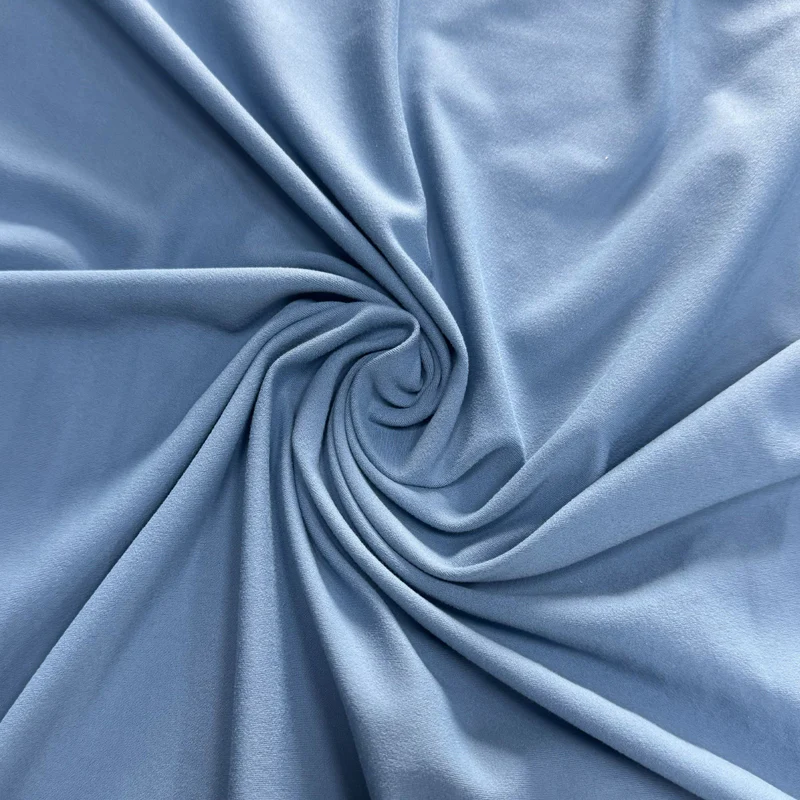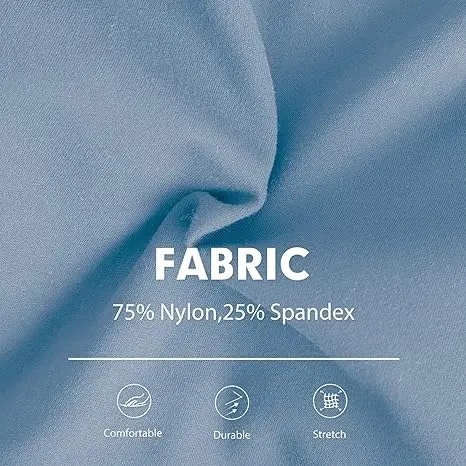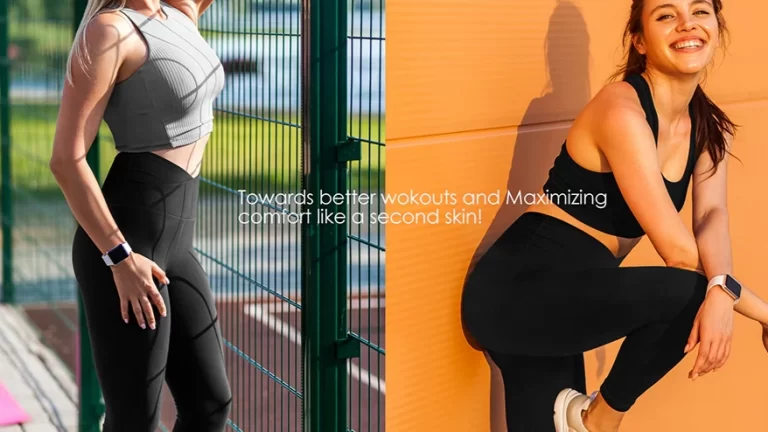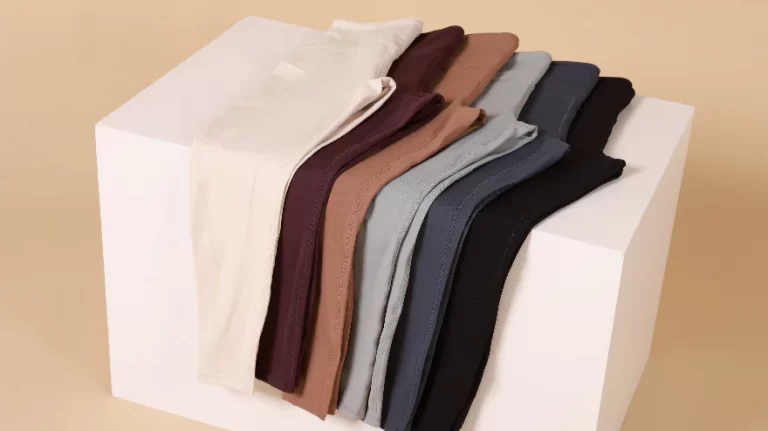When it comes to choosing the perfect fabric for making leggings, especially in the activewear category, the right material can make all the difference. Whether you’re designing leggings for yoga, running, or high-intensity workouts, the fabric must meet several key requirements to ensure comfort, durability, and performance. In this article, we’ll explore what customers typically look for in leggings fabrics, the best fabric combinations for creating high-quality leggings, and the recommended materials for different types of exercise.
What Is The Public’s Requirement For The Fabric of Leggings?
Customers have specific expectations when it comes to the fabric of their leggings, especially when these leggings are designed for activewear. Here are the main qualities they seek:
1. Comfort: The fabric should feel soft against the skin, with no irritation or discomfort during movement. Comfort is paramount, especially for leggings that may be worn for extended periods.
2. Stretch and Flexibility: High-quality leggings must offer excellent stretch and flexibility. Customers expect leggings to move with their bodies, providing a full range of motion without feeling restrictive.
3. Breathability: For activewear, breathability is crucial. The fabric should allow air to circulate, helping to regulate body temperature and wick away sweat, keeping the wearer dry and comfortable.
4. Durability: Leggings should be able to withstand frequent wear and washing without losing their shape, color, or performance qualities. Customers look for materials that maintain their integrity over time.
5. Opacity: No one wants see-through leggings, especially during workouts. Customers prefer materials that offer complete coverage, even when stretched.
6. Moisture-Wicking: The ability to wick moisture away from the skin is essential for activewear, helping to prevent chafing and discomfort during sweaty workouts.
7. Sustainability: Increasingly, customers are looking for eco-friendly materials that align with their values. Sustainable fabrics made from recycled or organic materials are becoming more popular in the activewear market.
Best Fabric Combinations for Making Leggings


To meet these customer expectations, manufacturers often use a combination of fabrics to create the ideal leggings. Here are some of the best fabric materials and combinations for making leggings:
1. Nylon-Spandex Blend
• Why It’s Great: Nylon is known for its strength, durability, and moisture-wicking properties, while spandex (also known as elastane or Lycra) provides the necessary stretch and flexibility. Together, these materials create leggings that are soft, resilient, and capable of holding their shape through intense workouts.
• Ideal Use: High-intensity workouts, running, gym sessions.
2. Polyester-Spandex Blend
• Why It’s Great: Polyester is lightweight, quick-drying, and highly breathable, making it a popular choice for activewear. When combined with spandex, it offers a stretchy, comfortable fit that is also resistant to shrinking and wrinkles.
• Ideal Use: Yoga, Pilates, casual wear.
3. Cotton-Spandex Blend
• Why It’s Great: Cotton is a natural fiber that offers softness and breathability, making it comfortable against the skin. When blended with spandex, cotton leggings provide stretch while retaining a soft, natural feel. However, they may not wick moisture as efficiently as synthetic blends.
• Ideal Use: Low-intensity activities, lounging, everyday wear.
4. Recycled Polyester-Spandex Blend
• Why It’s Great: This eco-friendly option uses recycled polyester, often made from post-consumer plastic bottles, blended with spandex. It offers the same benefits as traditional polyester-spandex blends—breathability, durability, and stretch—while also appealing to environmentally-conscious consumers.
• Ideal Use: Sustainable activewear, general workouts, yoga.
5. Supplex Nylon
• Why It’s Great: Supplex is a form of nylon that mimics the softness of cotton but with enhanced durability and moisture-wicking properties. It’s resistant to fading and shrinking, making it a long-lasting option for activewear leggings.
• Ideal Use: High-performance workouts, outdoor activities.
6. Bamboo-Spandex Blend
• Why It’s Great: Bamboo fabric is known for its natural softness, antibacterial properties, and sustainability. When combined with spandex, it creates stretchy, comfortable leggings that are also eco-friendly. Bamboo fabric is also highly breathable and moisture-wicking.
• Ideal Use: Yoga, low-impact workouts, eco-friendly activewear.
Recommended Leggings Fabrics for Different Types of Sports
Depending on the type of exercise, different fabric combinations may be more suitable for leggings. Here’s a guide to choosing the best materials for various activities:
1. Yoga
• Recommended Fabric: Polyester-Spandex Blend or Bamboo-Spandex Blend.
• Why: Yoga requires a fabric that offers stretch, comfort, and breathability. Both polyester-spandex and bamboo-spandex blends provide the flexibility needed for yoga poses while keeping the body cool and comfortable.
2. Running
• Recommended Fabric: Nylon-Spandex Blend.
• Why: Running demands a fabric that is durable, moisture-wicking, and supportive. Nylon-spandex blends offer excellent stretch and recovery, helping the leggings stay in place during movement, and wick sweat away effectively.
3. High-Intensity Workouts
• Recommended Fabric: Supplex Nylon or Nylon-Spandex Blend.
• Why: High-intensity workouts require leggings that can handle vigorous activity without losing shape or becoming uncomfortable. Supplex nylon is particularly good for its durability and moisture management.
4. Low-Impact Activities (e.g., Pilates, Barre)
• Recommended Fabric: Cotton-Spandex Blend or Polyester-Spandex Blend.
• Why: Low-impact activities allow for the use of softer, more comfortable fabrics. Cotton-spandex blends are great for their natural feel, while polyester-spandex offers a bit more moisture management.
5. Casual Wear and Lounging
• Recommended Fabric: Cotton-Spandex Blend or Bamboo-Spandex Blend.
• Why: Comfort is key for casual wear and lounging. Cotton and bamboo blends provide a soft, cozy feel that’s perfect for relaxing.
6. Outdoor Activities
• Recommended Fabric: Supplex Nylon or Recycled Polyester-Spandex Blend.
• Why: Outdoor activities require durable, weather-resistant materials. Supplex nylon is excellent for its robustness, while recycled polyester blends offer sustainability without sacrificing performance.
Conclusion
Choosing the best fabric materials for making leggings involves balancing comfort, performance, and durability. By understanding what customers look for in their leggings—such as stretch, breathability, and moisture-wicking properties—you can select the right fabric combinations to meet their needs. Whether you’re designing leggings for yoga, running, or just everyday wear, the right materials can make all the difference in creating a product that customers will love and rely on.
For businesses looking to create custom activewear, it’s essential to consider both the specific demands of the activity and the growing trend toward sustainable, eco-friendly materials. By offering a range of fabric options tailored to different types of exercise, you can cater to a broad audience and establish your brand as a leader in quality and innovation. If you want to learn about more informations, please feel free to contact us.



